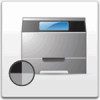Lexmark Monochrome Laser Complete Printer Reference (1.7 MB) - Page 168
Job Buffering setting, Network environment, Downloaded resources
 |
View all Lexmark Monochrome Laser manuals
Add to My Manuals
Save this manual to your list of manuals |
Page 168 highlights
See "Changing printer settings" on page 27 for detailed information about printer menus and changing printer settings. Job Buffering setting Increasing the buffer size enables a port to hold more or larger print jobs. Since some applications do not let the printer do any more processing until an entire job has been sent to the printer, increasing the buffer size lets you return to your application sooner. The more memory you use for one buffer, the less memory is available in the printer or other buffers or for processing complex jobs. See "Changing printer settings" on page 27 for detailed information about printer menus and changing printer settings. Network environment Connecting a printer to a network using a print server allows many different users to access the same printer from their workstations. This may result in many more print jobs being sent to the printer, often at the same time. The demands of network printing require more memory for efficient printing. Print servers also use buffers requiring a portion of the printer's memory capacity. Increasing the buffer size enables the port to hold more or larger print jobs. However, the more memory you use for buffers, the less printer memory is available for processing complex jobs. See "Connectivity and network management" on page 181 for more information. Downloaded resources Installing a disk or flash option lets you download and store resources, including fonts, forms, and symbol sets. Unlike printer memory, resources stored on disk or flash are not lost when the printer is reset or turned off. Once you download these resources, the printer can access them quickly, saving time and resources. For example, if you download certain fonts to a flash option and then send a job using those fonts, the printer receives only the print job and not the embedded fonts. Managing memory 168















